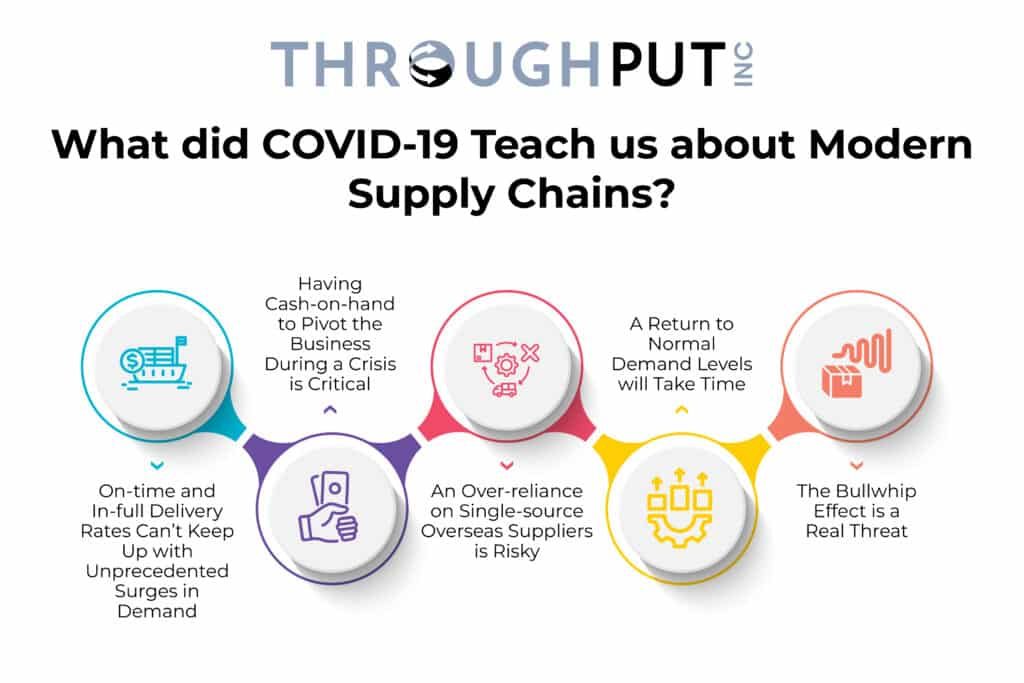As businesses re-open and deal with the effects of the pandemic however, priorities have shifted from cost competitiveness and lead times to stock availability and accessibility.
Supply chains are complex, and there are always challenges. Before the Coronavirus disease (COVID-19) pandemic, many manufacturing businesses focused on sourcing raw materials and subassembly parts.
Optimization was king, with manufacturers pushing for uninterrupted supply, low inventory levels, just-in-time delivery and scheduled logistics runs with precise loading and unloading sequences.
As businesses re-open and deal with the effects of the pandemic however, priorities have shifted from cost competitiveness and lead times to stock availability and accessibility. Even quality may take a temporary back seat to the need to get the required materials and components.
Businesses must grapple with limited visibility into what suppliers have in stock and when stock levels will be sufficient to satisfy production needs.
In short, planning decisions are nearly impossible right now. Some companies had the foresight to diversify their supply chains for critical parts, but that may not be enough to prevent all issues.
As the pandemic flares up in different regions at different times, the reopening periods for some businesses may not align with their suppliers — causing critical shortages.
What did COVID-19 Teach us about Modern Supply Chains?
While operations departments routinely create contingency plans for events that are likely to disrupt well-optimized supply chain flows, few organizations prepared for a massive disruption like a pandemic.
The current challenges are all temporary, however. In time, companies that survive the cash crunch will return to normal operations.
In the meantime, companies should focus on building resilient supply chains, diversifying risks, and incorporating the lessons the virus teaches about managing supply chains. Consider the following:

On-time and In-full Delivery Rates Can’t Keep Up with Unprecedented Surges in Demand
Evidence of U.S. markets running out of critical items such as toilet paper, hand sanitizer, test swab sticks, masks and even fireworks could be seen over and over again in the months following the outbreak.
Although the sudden surges in demand will wear off, one thing is clear: The old model of on-time and in-full delivery is no match for a global crisis. Companies should rethink their strategies and determine whether a cushion in their supplies would be a smart change.
Having Cash-on-hand to Pivot the Business During a Crisis is Critical
Inventory sitting on shelves is a liability that loses value with every passing day. Smart manufacturers labeled as essential businesses were able to find new markets for the extra stock they had on hand, thereby continuing to turn a profit during the crisis.
Having cash on hand to pivot in a new direction is key.
Make-to-stock businesses, on the other hand, saw plummeting demand and shortages of extra cash. As a result, they have been unable to take advantage of emerging demands.
An Over-reliance on Single-source Overseas Suppliers is Risky
Manufacturers in the United States and around the world have been in cost-cutting mode over the past few decades as a way to offer more competitive pricing.
Now that borders are closed and many subcomponent manufacturers have had a few months of downtime due to lockdowns, companies will likely experience another wave of shortages in noncritical parts.
There is a backlog of orders from different manufacturers and not enough supply to build up a sufficient buffer.
In an attempt to relieve pressure for subassembly parts and level demand, manufacturers will raise their prices. Overnight, customers without alternate supplier options will see their cost-savings disappear. To avoid sudden price changes in the future, companies should focus on diversifying their supplier options.
A Return to Normal Demand Levels will Take Time
It would be a major mistake for companies to base future operations strategies on forecasts or pre-orders from before the pandemic.
Many standing orders may no longer be active or valid, with needs changing and companies downstream in the value chain facing severe liquidity issues and struggling to pay for their original orders.
Industries that previously used historical trend analysis in planning future business activity will need to learn the new dynamics of the market as it slowly adjusts to a “New Normal.”
The Bullwhip Effect is a Real Threat
Companies that fall into the category of “hot items in demand” must be aware of the bullwhip effect. Essentially, companies that chase down alternate short-term solutions to fill the gap in supplies may be promising the moon without any real guarantees of long-term business.
If these companies shift gears late in the process – after a manufacturer has invested significant cash to expand capacity and accommodate their needs – the manufacturer might be left with unrecoverable excess capacity when demand stabilizes.
In other words:
It’s vital to vet new customers and move forward only after the ink has dried on binding contracts.
Supply chains may be chaotic now, but a new order will be established in time. In the interim, manufacturers should heed the lessons of COVID-19 and incorporate those lessons into their strategic plans going forward.
Namely, move away from make-to-stock wherever possible, leave spare protective capacity in operations, and have a backup supply chain partner.
Most importantly, learn to be flexible and continuously evolve as the world changes.


